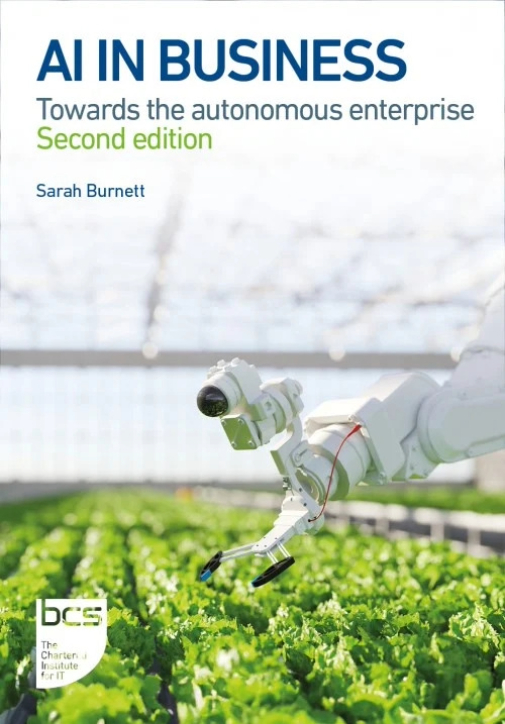
The key words in the title of the book are ‘autonomous enterprise’: this is a book about using AI to make enterprises more effective with autonomy (AI), rather than (as the cover picture of a robot might suggest) embed autonomous robotic systems in a business.
The volume is in three main parts. The first introduces AI, with useful explanations of terms like “generative AI” and gives some thoughts about how AI might be used for innovation and efficiency in a business. The second part gives some case studies on how real, recognisable organisations have successfully used AI to automate their operations with some success. The third part reflects upon the future, focusing on how an organisation might start the journey towards autonomy, as well as some thoughts on the impact of autonomy on society.
A chapter I found particularly helpful is ‘What You Need to Know About AI.’ It seeks to explain the relevant terms at the level required by an industry or business leader, rather than giving an in-depth technical account of the concepts, and in this the author achieved their intent.
At the heart of the book are the case studies, involving organisations that include international companies, an NHS Trust, and a district council. The reader is likely to have some personal experience of these types of organisations, for instance as a patient or resident. This made the case studies even more engaging, at least to me, as not only could I put myself in the shoes of a leader in the organisation concerned, it was also possible to empathise with those involved in the system. This knowledge and interest really brought the content to life, and this made the author’s choice of case studies inspired.
The closing section is intriguing. The chapter introducing the first steps an organisation might take towards autonomy is helpful, as it illustrates example of the stages of autonomy as applied to buying a car (spoiler alert – in the last stage it is manufactured and then drives itself to the consumer’s home!) The second chapter in this section, looking towards the future, gets the reader thinking more broadly about the impact of automation on society. This includes the thorny issues of ethics and impact on things like (un)employment; both areas were covered engagingly and thought provokingly.
Although impressed with the content of the book, I found the typeface very cramped and small, and joked with friends that 200 pages of material is crammed into 160. This makes the contents a harder read than they might otherwise be.
In one sense, each of the three sections would make a good, if short, book but, read together in the sequence provided, they become more than the sum of their parts, with the first part informative, the second part engaging, and the third thought provoking. AI in Business is an excellent read for an organisational leader seeking inspiration to automate. It gives enough language and concept familiarity to enable such a reader to ask sensible questions of technical experts, and an idea of the art of the possible. Someone with an interest in how AI might change the world around us could also find this a fascinating and informative read.
- About the author
- Professor Edward Rochead, M.Math (Hons), PGDip, CMath, FIMA is a mathematician employed by the government, currently leading work on STEM Skills and Data. Ed is chair of the Alliance for Data Science Professionals, a Visiting Professor at Loughborough University, an Honorary Professor at the University of Birmingham, Chartered Mathematician, and Fellow of the IMA and RSA. Copyright and licence
- © 2025 Royal Statistical Society
-
Thumbnail image by BCS
This article is licensed under a Creative Commons Attribution (CC BY 4.0) International licence.